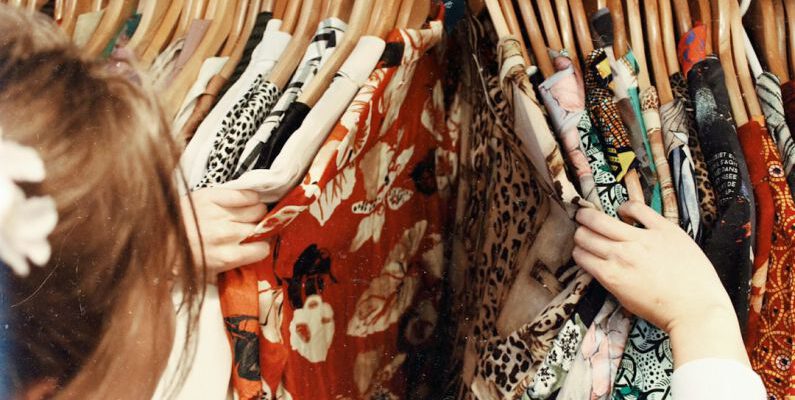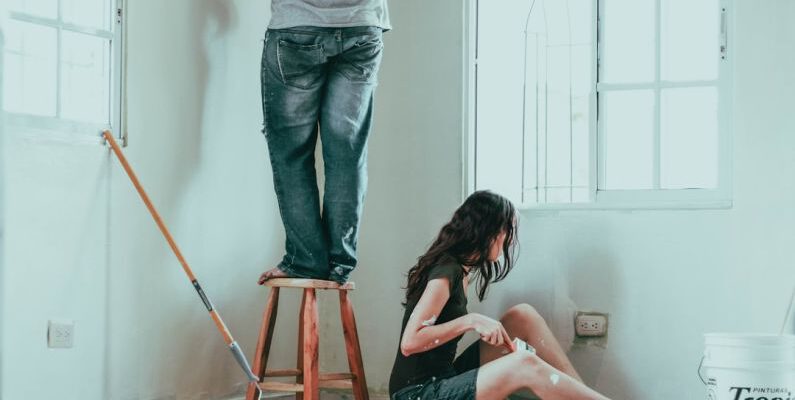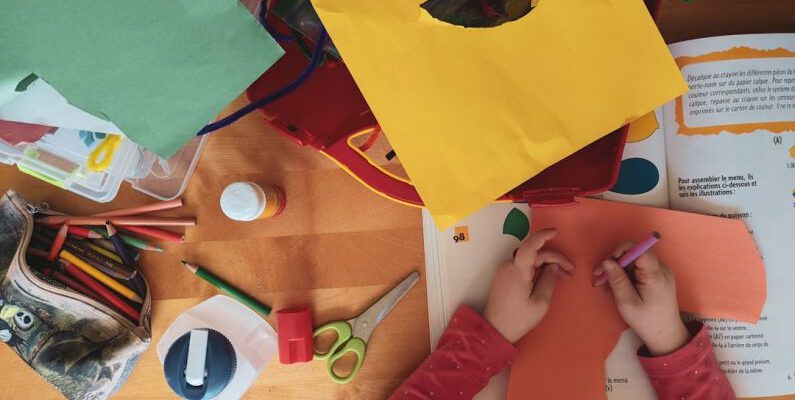In a world where technology is constantly evolving, the idea of creating your own tech gadgets at home may seem like a daunting task reserved for only the most tech-savvy individuals. However, with the rise of DIY electronics kits and online tutorials, more and more people are exploring the possibility of bringing their gadget ideas to life right from the comfort of their own homes. So, can you really create your own tech gadgets at home? Let's delve into this intriguing topic.
Blog Posts
In Home Decor
Smart home devices have revolutionized the way we interact with our living spaces. From thermostats that adjust to our preferences to lighting systems that can be controlled remotely, these gadgets offer convenience and efficiency like never before. But can these high-tech tools seamlessly blend into the design of a home without compromising aesthetics? Let's explore how smart home devices can be incorporated into home design to create a harmonious and functional living environment.
Enhancing Aesthetics with Seamless Integration
One of the main concerns when incorporating smart home devices into a design scheme is how to maintain the overall aesthetic of the space. Traditional devices such as thermostats and security cameras can often appear clunky and out of place in a well-designed room. However, with advancements in technology, many smart home devices now come in sleek and modern designs that can complement a variety of interior styles. For example, smart lighting systems like Philips Hue offer a range of customizable options that can enhance the ambiance of a room while seamlessly blending into the design. These devices can be integrated into existing fixtures or installed discreetly to create a cohesive look that doesn't detract from the overall aesthetic.Creating a Connected and Functional Home
Beyond aesthetics, incorporating smart home devices into home design can also greatly improve the functionality and efficiency of a space. From smart thermostats that learn your heating and cooling preferences to automated blinds that adjust based on the time of day, these devices can help create a more comfortable and convenient living environment. By strategically placing sensors and devices throughout the home, homeowners can create a connected ecosystem that responds to their needs in real-time. For example, a smart home hub can be programmed to adjust the lighting, temperature, and music in a room based on the time of day or the occupants' preferences. This level of automation not only enhances the living experience but also helps conserve energy and reduce utility costs.Incorporating Smart Home Devices into Design Elements
To truly integrate smart home devices into home design, it's important to consider them as part of the overall design elements of a space. Instead of treating these devices as standalone gadgets, they should be incorporated into the design scheme from the beginning to ensure a cohesive and harmonious look. For example, smart mirrors with built-in displays can serve as both functional devices and decorative elements in a bathroom or bedroom. Similarly, smart speakers can be strategically placed throughout the home to provide seamless audio integration without compromising the design aesthetic.Maximizing Space and Efficiency with Smart Solutions
Another benefit of incorporating smart home devices into home design is the ability to maximize space and efficiency. For smaller homes or apartments, smart devices can help streamline daily tasks and optimize the use of limited space. For example, smart storage solutions like motorized closets or modular furniture with built-in charging stations can help maximize storage space while keeping the home clutter-free. Additionally, smart appliances such as refrigerators with touch-screen displays or ovens with remote control capabilities can help homeowners make the most of their kitchen space while adding a touch of modernity to the design.Embracing the Future of Home Design
As technology continues to advance, the possibilities for incorporating smart home devices into home design are endless. From voice-activated assistants to integrated home security systems, these devices offer a level of convenience and control that was once unimaginable. By embracing the future of home design and integrating smart devices into our living spaces, we can create homes that are not only beautiful and functional but also efficient and connected. With careful consideration and planning, smart home devices can seamlessly blend into any design scheme to create a truly modern and intelligent living environment.
In a world dominated by fast fashion and mass-produced garments, there is a growing appreciation for handmade and artisanal fashion pieces. These unique creations hold a special place in the hearts of fashion enthusiasts and conscious consumers alike. But what makes these handmade and artisanal pieces so special? Let's delve into the reasons behind the allure of these one-of-a-kind treasures.
Craftsmanship and Attention to Detail
Handmade and artisanal fashion pieces are crafted with meticulous attention to detail and a level of craftsmanship that is often unmatched by mass-produced items. From hand-sewn embroidery to intricate beading, these pieces showcase the skill and artistry of the maker. Each stitch, fold, and embellishment is carefully thought out and executed, resulting in a garment that is truly a work of art. The human touch that goes into creating handmade and artisanal fashion pieces adds a level of authenticity and soul that is hard to replicate in factory-made clothing. When you purchase a handmade garment, you are not just buying a piece of clothing - you are investing in the time, effort, and expertise of the artisan behind it.Unique and Individualistic
One of the most alluring aspects of handmade and artisanal fashion pieces is their uniqueness. Unlike mass-produced garments that are churned out in large quantities, handmade pieces are often one-of-a-kind or produced in small batches. This means that when you wear a handmade garment, you are unlikely to bump into someone wearing the exact same thing. The individualistic nature of handmade fashion allows you to express your personal style in a way that is truly unique. Whether it's a hand-painted silk scarf or a hand-knitted sweater, these pieces add a touch of personality and character to your wardrobe that sets you apart from the crowd.Supporting Artisans and Small Businesses
By choosing handmade and artisanal fashion pieces, you are not only investing in a high-quality, unique garment but also supporting independent artisans and small businesses. In a world where fast fashion giants dominate the market, it is essential to support local makers and craftspeople who pour their heart and soul into creating beautiful pieces. When you purchase a handmade garment, you are directly contributing to the livelihood of the artisan behind it. Your support helps sustain traditional craftsmanship and ensures that these skills are passed down to future generations. By buying handmade, you are making a conscious choice to support ethical and sustainable practices in the fashion industry.Environmental Impact
In an era of fast fashion and disposable clothing, handmade and artisanal fashion pieces offer a more sustainable alternative. By investing in high-quality, well-made garments, you are reducing your impact on the environment and promoting a more conscious approach to fashion consumption. Handmade pieces are often crafted from natural, sustainable materials and produced in small quantities, reducing the carbon footprint associated with mass production. Additionally, the longevity of handmade garments means that they are less likely to end up in landfills, contributing to a more circular and eco-friendly fashion cycle.Embracing Slow Fashion
Handmade and artisanal fashion pieces are emblematic of the slow fashion movement, which advocates for a more mindful and sustainable approach to clothing consumption. Slow fashion encourages consumers to invest in quality over quantity, to cherish and care for their garments, and to support ethical and transparent practices in the fashion industry. By choosing handmade and artisanal pieces, you are aligning yourself with the principles of slow fashion and embracing a more conscious way of dressing. These pieces are not just trends to be discarded after a season but timeless treasures to be cherished for years to come. In conclusion, Handmade and artisanal fashion pieces hold a special place in the hearts of those who appreciate craftsmanship, individuality, and sustainability in their clothing choices. These unique creations offer a level of artistry and authenticity that is hard to find in mass-produced garments, making them truly special additions to any wardrobe. By supporting independent artisans and embracing the principles of slow fashion, you are not just buying a piece of clothing - you are investing in a story, a tradition, and a more sustainable future for the fashion industry.
In Tech Gadgets
In recent years, drones have become increasingly popular among the general public. Once reserved for military use and specialized industries, drones are now more accessible and affordable than ever before. This surge in popularity raises the question: why are drones becoming more accessible to the public?
**Advancements in Technology**
One of the primary reasons for the increased accessibility of drones is the rapid advancements in technology. The evolution of drone technology has made these devices more user-friendly, reliable, and affordable. Improved battery life, enhanced stability features, and the development of intuitive controls have all contributed to making drones more accessible to the average consumer.
**Decrease in Costs**
Another factor driving the accessibility of drones is the decrease in costs associated with manufacturing these devices. As technology has advanced, the production of drones has become more efficient, leading to lower production costs. This cost reduction has been passed on to consumers, making drones more affordable for a wider range of people.
**Growing Market Demand**
The growing market demand for drones has also played a significant role in their increased accessibility. As drones have become more versatile and capable of performing a wide range of tasks, their appeal has expanded beyond hobbyists and enthusiasts. Industries such as agriculture, photography, and surveillance are increasingly utilizing drones for various purposes, driving up demand and encouraging manufacturers to produce more affordable options.
**Regulatory Environment**
Changes in the regulatory environment have also contributed to the increased accessibility of drones. Governments around the world have recognized the potential of drones and have implemented regulations to ensure their safe and responsible use. While regulations are important for ensuring public safety, they have also helped to legitimize the use of drones and fostered a more accepting attitude towards these devices.
**Educational Resources**
The availability of educational resources and training programs has made it easier for individuals to learn how to operate drones safely and effectively. Online tutorials, workshops, and certification courses have helped demystify the process of flying drones and have empowered more people to take up this hobby or pursue drone-related careers.
**Social Media and Pop Culture Influence**
The influence of social media and pop culture cannot be overlooked when considering the rising popularity of drones. Platforms like Instagram and YouTube are filled with stunning aerial footage captured by drones, showcasing the creative possibilities and potential of these devices. Additionally, popular culture has portrayed drones in a positive light, further fueling interest and curiosity among the public.
**Integration with Other Technologies**
Drones have also become more accessible due to their integration with other emerging technologies. For example, advancements in artificial intelligence and automation have enabled drones to perform complex tasks autonomously, expanding their potential applications and making them more attractive to a wider audience.
**Conclusion: The Future of Drones**
As drones continue to evolve and become more accessible to the public, we can expect to see even greater innovation and integration in the future. From delivery drones to aerial taxis, the possibilities are endless. As technology progresses and societal attitudes towards drones shift, these devices are poised to become an integral part of our everyday lives. The increasing accessibility of drones represents not just a technological advancement but a cultural shift towards embracing the potential of these versatile flying machines.
Vintage shopping has seen a resurgence in popularity in recent years, with many people looking to add unique and one-of-a-kind pieces to their wardrobes. While scouring local thrift stores and flea markets can be a fun adventure, the rise of online platforms has made it easier than ever to shop for vintage items from the comfort of your own home. In this article, we will explore some of the best online platforms for vintage shopping that cater to a variety of styles and budgets.
Etsy
Etsy is a popular online marketplace that offers a wide selection of vintage and handmade items. With thousands of independent sellers from around the world, you can find a diverse range of vintage clothing, accessories, and home decor on Etsy. The platform allows you to search for specific items or browse curated collections, making it easy to discover unique pieces that suit your personal style. Additionally, Etsy provides a secure payment system and buyer protection policies, giving you peace of mind when making a purchase.Depop
Depop is a social shopping app that has gained a cult following among fashion enthusiasts and vintage lovers. The platform combines elements of social media and e-commerce, allowing users to buy and sell preloved clothing and accessories. Depop's interface is user-friendly and visually appealing, making it enjoyable to browse through the curated collections and shop from independent sellers. Whether you're looking for vintage designer pieces or trendy streetwear, Depop offers a wide range of options to suit every taste.ThredUp
ThredUp is an online thrift store that specializes in secondhand clothing for women and children. The platform offers a curated selection of high-quality vintage and designer items at affordable prices. ThredUp's inventory is constantly updated with new arrivals, making it easy to find hidden gems and unique pieces. In addition to shopping for vintage clothing, you can also sell your own gently used items on ThredUp, allowing you to declutter your wardrobe while earning some extra cash.ASOS Marketplace
ASOS Marketplace is a platform that showcases independent vintage boutiques and sellers. With a focus on curated collections and unique finds, ASOS Marketplace offers a diverse range of vintage clothing, accessories, and jewelry. The platform features a mix of established vintage sellers and up-and-coming designers, giving you access to a wide variety of styles and trends. ASOS Marketplace also provides a secure shopping experience with buyer protection policies and secure payment options.The RealReal
The RealReal is a luxury consignment store that specializes in authenticated preowned designer items. While the focus is on high-end fashion and accessories, The RealReal also offers a selection of vintage clothing and accessories from top designer brands. The platform's rigorous authentication process ensures that all items are genuine, giving you confidence in the quality and authenticity of your purchase. Whether you're looking for a vintage Chanel bag or a classic Burberry trench coat, The RealReal has a wide range of luxury vintage pieces to choose from. In conclusion, the rise of online platforms has made vintage shopping more accessible and convenient than ever before. Whether you're a seasoned vintage enthusiast or a newcomer to the world of secondhand shopping, there are plenty of options available to help you find unique and stylish pieces for your wardrobe. From curated marketplaces like Etsy and ASOS Marketplace to social shopping apps like Depop, there is something for everyone when it comes to vintage shopping online. So why not explore these platforms and uncover the hidden treasures waiting to be discovered in the world of vintage fashion?
In DIY Hacks
Decorating your home can be a rewarding and enjoyable experience, but it doesn't have to break the bank or require professional assistance. DIY home decor projects are a fantastic way to personalize your space while adding a touch of creativity and style. If you're looking to spruce up your living environment without a massive time or financial investment, consider trying some of these easy DIY projects that can transform your home in no time.
Quick and Easy Wall Art
One of the simplest ways to add a pop of personality to any room is by creating your own wall art. Whether you're a budding artist or simply looking for a fun and easy project, DIY wall art can instantly elevate the look of your space. Grab a canvas or some sturdy paper, some paints or markers, and let your creativity flow. Abstract designs, geometric patterns, or even simple quotes can make a big impact on your walls. Plus, the best part is that you can customize the colors and style to match your existing decor.Upcycled Planters
Adding some greenery to your home is a great way to bring life and freshness into any room. Instead of purchasing expensive planters, consider upcycling items you already have lying around the house. Old tin cans, mason jars, or even wooden crates can be transformed into unique and stylish planters with just a bit of paint or decorative paper. Not only will this add a touch of green to your space, but it's also an eco-friendly way to repurpose items that might otherwise end up in the trash.Creative Shelving Solutions
Shelving is not only practical for storage but can also be a decorative element in your home. DIY shelving projects are easy to customize to fit your space and style preferences. Floating shelves made from reclaimed wood, rope, or even old drawers can add a rustic or eclectic touch to any room. If you're feeling particularly crafty, you can also try your hand at making geometric or honeycomb shelves using simple materials like wooden dowels or popsicle sticks.Personalized Photo Displays
Displaying photos of family and friends is a great way to add a personal touch to your home decor. Instead of traditional frames, consider creating a unique photo display using items like twine, clothespins, or even wire grids. You can easily switch out and rearrange photos to keep the display fresh and dynamic. This DIY project not only adds a personal touch to your space but also serves as a conversation starter for guests.Customized Throw Pillows
Throw pillows are an easy and affordable way to update the look of your living room or bedroom. Instead of purchasing expensive designer pillows, consider making your own with fabric paint, stencils, or even embroidery. You can choose fabrics that complement your existing decor and create custom designs that reflect your personal style. This DIY project allows you to experiment with different patterns and colors without a significant investment.Repurposed Furniture
If you're looking to update your home decor on a budget, consider repurposing old furniture pieces instead of buying new ones. Sanding down and painting a thrifted dresser or coffee table can completely transform its look and breathe new life into your space. You can also try adding new hardware, like decorative knobs or drawer pulls, to give furniture a fresh and updated appearance. This DIY project not only saves you money but also allows you to create one-of-a-kind pieces that reflect your personal style.Wrap-Up: Get Creative with Easy DIY Projects
With a little creativity and some basic crafting skills, you can transform your living space with these easy and budget-friendly DIY home decor projects. From personalized wall art to upcycled planters and repurposed furniture, there are endless possibilities for adding a touch of style and personality to your home. So roll up your sleeves, gather your materials, and get ready to make your space uniquely yours with these fun and easy projects.
In DIY Hacks
With the rise of the do-it-yourself (DIY) movement, more and more people are looking to hone their skills and take on projects themselves. Whether you're interested in woodworking, home improvement, crafting, or any other DIY endeavor, there are numerous platforms available to help you learn and master these skills. In this article, we will explore some of the best platforms to learn DIY skills and empower yourself to tackle new projects with confidence.
**YouTube**
YouTube has become a go-to resource for learning just about anything, and DIY skills are no exception. With countless channels dedicated to DIY projects, you can find tutorials on everything from basic home repairs to intricate woodworking techniques. The beauty of YouTube is that you can watch videos at your own pace, rewind and pause as needed, making it a flexible and accessible platform for learning new skills.
**Skillshare**
Skillshare is an online learning community with a plethora of classes on DIY skills. From sewing and knitting to woodworking and home improvement, Skillshare offers a wide range of courses taught by experts in their respective fields. The platform allows you to learn at your own pace and connect with a community of like-minded individuals who share your passion for DIY projects.
**Udemy**
Udemy is another popular online learning platform that offers a variety of courses on DIY skills. From beginner to advanced levels, Udemy has courses to suit every skill level and interest. With courses on topics such as DIY home decor, furniture making, and jewelry design, Udemy provides a comprehensive learning experience for those looking to expand their DIY skills.
**Instructables**
Instructables is a community-driven platform where users can share step-by-step instructions for DIY projects. Whether you're looking to build a piece of furniture, create a piece of art, or fix something around the house, Instructables has a wealth of tutorials to guide you through the process. The platform also allows users to interact with one another, ask questions, and share their own projects, making it a great place to connect with fellow DIY enthusiasts.
**Pinterest**
Pinterest is a treasure trove of DIY inspiration and ideas. With millions of DIY projects and tutorials shared on the platform, Pinterest is a great place to discover new projects and gather ideas for your next endeavor. Whether you're looking for home decor inspiration, crafting ideas, or woodworking projects, Pinterest offers a visually appealing way to explore the world of DIY.
**Craftsy**
Craftsy is a platform dedicated to all things crafting, with a focus on DIY skills such as sewing, knitting, quilting, and more. The platform offers online classes taught by expert instructors, as well as patterns and supplies to help you get started on your projects. Whether you're a beginner looking to learn the basics or an experienced crafter looking to expand your skills, Craftsy has something for everyone.
**Conclusion: Empower Yourself with DIY Skills**
Learning DIY skills not only allows you to save money and customize projects to your liking but also empowers you to take on new challenges and develop your creativity. By utilizing platforms such as YouTube, Skillshare, Udemy, Instructables, Pinterest, and Craftsy, you can expand your skill set and embark on a journey of self-improvement and creativity. So, roll up your sleeves, pick a platform that resonates with you, and start learning new DIY skills today!
In Tech Gadgets
In today's fast-paced digital age, smartphones have become an integral part of our everyday lives, serving as more than just devices for communication. With rapid advancements in technology, smartphones continue to evolve, offering users new and innovative features that enhance their overall experience. From cutting-edge cameras to 5G connectivity and foldable displays, the latest innovations in smartphone technology are shaping the future of mobile devices.
Enhanced Camera Capabilities
One of the most significant advancements in smartphone technology is the continuous improvement of camera capabilities. Smartphone manufacturers are constantly pushing the boundaries of what is possible with mobile photography, introducing features like multiple lenses, AI-powered image processing, and enhanced low-light performance. The latest smartphones are equipped with high-resolution sensors that allow users to capture stunning photos and videos with incredible detail and clarity. Additionally, features such as portrait mode, night mode, and optical image stabilization have become standard offerings, enabling users to take professional-quality photos with ease.Foldable Displays
Another groundbreaking innovation in smartphone technology is the introduction of foldable displays. Foldable smartphones feature flexible screens that can be folded or unfolded to switch between a compact phone size and a larger tablet-like display. This revolutionary design offers users the versatility of having a compact device for everyday use that can transform into a larger screen for enhanced productivity and multimedia consumption. With major smartphone manufacturers investing in foldable technology, we can expect to see more advancements in this area in the coming years.5G Connectivity
The rollout of 5G networks has ushered in a new era of connectivity, and smartphone manufacturers are quick to capitalize on this technology. 5G-enabled smartphones offer significantly faster download and upload speeds, lower latency, and improved network reliability compared to previous generations of mobile networks. This enhanced connectivity opens up a world of possibilities for users, enabling seamless streaming of high-definition content, faster gaming experiences, and real-time communication. As 5G networks continue to expand globally, the demand for 5G-enabled smartphones is expected to rise, driving further innovation in this area.Augmented Reality (AR) and Virtual Reality (VR)
Augmented reality (AR) and virtual reality (VR) technologies are becoming increasingly integrated into smartphones, offering users immersive and interactive experiences. AR applications overlay digital information onto the real world through the smartphone's camera, while VR applications transport users to virtual environments through specialized headsets or accessories. The latest smartphones are equipped with powerful processors and sensors that enable smooth AR and VR experiences, allowing users to explore new forms of entertainment, education, and productivity.Biometric Security Features
Biometric security features, such as facial recognition and fingerprint scanning, have become standard on modern smartphones, offering users a convenient and secure way to unlock their devices and authenticate payments. Facial recognition technology uses advanced algorithms to map and recognize a user's face, providing a fast and secure unlocking method. Fingerprint scanners, on the other hand, offer a quick and reliable way to access the device and sensitive information. As smartphone manufacturers continue to prioritize user security, we can expect to see further advancements in biometric authentication technology.The Future of Smartphone Innovation
As smartphone technology continues to evolve at a rapid pace, the future holds even more exciting possibilities for innovation. From artificial intelligence and machine learning to advanced biometrics and sustainable design, the next wave of smartphone features will focus on enhancing user experience, improving performance, and addressing environmental concerns. With a growing emphasis on sustainability and ethical practices, smartphone manufacturers are exploring ways to reduce e-waste, increase device longevity, and promote eco-friendly manufacturing processes. In conclusion, the latest innovations in smartphone technology are reshaping the way we interact with mobile devices, offering new features and capabilities that enhance our daily lives. From enhanced camera capabilities to foldable displays and 5G connectivity, smartphones are becoming more powerful, versatile, and connected than ever before. As technology continues to advance, we can look forward to a future where smartphones play an even more integral role in our lives, driving innovation and shaping the way we experience the digital world.
In recent years, there has been a noticeable resurgence in the popularity of vintage furniture. From mid-century modern pieces to antique finds, people are increasingly drawn to the charm and character of older furniture styles. But what is driving this revival of interest in vintage furniture? Let's explore the reasons behind the comeback of vintage furniture and why it continues to capture the hearts of many interior design enthusiasts.
**Embracing Sustainability**
One of the key factors driving the renewed interest in vintage furniture is the growing emphasis on sustainability and eco-conscious living. As more people become aware of the environmental impact of mass-produced furniture and the importance of reducing waste, vintage furniture offers a sustainable alternative. By opting for pre-loved pieces, individuals can give new life to old items and reduce their carbon footprint. Vintage furniture is often well-made and durable, making it a practical choice for those looking to furnish their homes with quality pieces that stand the test of time.
**Unique Style and Character**
Vintage furniture holds a certain allure that mass-produced items often lack. Each piece tells a story, reflecting the craftsmanship and design trends of its era. Whether it's the sleek lines of mid-century modern furniture or the ornate details of Victorian pieces, vintage furniture exudes a sense of history and character that adds depth to any space. In a world saturated with generic furniture options, vintage pieces stand out for their uniqueness and individuality, allowing homeowners to express their personal style in a distinctive way.
**Quality Craftsmanship**
Another reason for the resurgence of vintage furniture is the superior craftsmanship found in older pieces. Many vintage items were handcrafted by skilled artisans using high-quality materials, resulting in furniture that is not only aesthetically pleasing but also built to last. In contrast to the disposable nature of much modern furniture, vintage pieces are often sturdier and more robust, making them a wise investment for those seeking furniture that will withstand the test of time. The attention to detail and craftsmanship found in vintage furniture is a testament to the dedication of the artisans who created these timeless pieces.
**Affordable Luxury**
Vintage furniture offers a way to add a touch of luxury to your home without breaking the bank. While high-end designer furniture can come with a hefty price tag, vintage pieces can often be found at more affordable prices, especially when shopping at thrift stores, antique markets, or online marketplaces. By opting for vintage furniture, homeowners can elevate their interiors with unique, high-quality pieces that exude style and sophistication without the luxury price tag.
**Nostalgia and Sentiment**
For many people, vintage furniture holds a sentimental value that goes beyond aesthetics. Whether it's a childhood memory associated with a particular piece or a connection to a bygone era, vintage furniture can evoke feelings of nostalgia and sentimental attachment. Incorporating vintage pieces into your home decor allows you to surround yourself with items that hold personal significance, creating a sense of warmth and familiarity in your living space.
**In Conclusion**
The resurgence of vintage furniture can be attributed to a combination of factors, from a growing emphasis on sustainability and quality craftsmanship to the unique style and character that vintage pieces bring to a space. As more people seek to create homes that reflect their individuality and values, vintage furniture offers a compelling alternative to mass-produced items. With its timeless appeal, affordability, and environmental benefits, vintage furniture is sure to continue making a comeback in the world of interior design, captivating the hearts of those who appreciate the beauty and history of bygone eras.
Luxury items are not just possessions; they are investments that deserve to be cared for and maintained to ensure they last a lifetime. Whether it's a designer handbag, a pair of high-end shoes, or a luxury watch, taking the time to properly care for your luxury items can significantly extend their lifespan and keep them looking as good as new for years to come.
Understanding the value of your luxury items and the importance of proper care is the first step in ensuring their longevity. Here are some essential tips on how to care for your luxury items to make them last longer.
Store Them Properly
One of the key factors in maintaining the quality of your luxury items is proper storage. When not in use, store your luxury items in their original dust bags or boxes to protect them from dust, sunlight, and moisture. Avoid hanging leather handbags or storing them in cramped spaces that can cause creases or deformities. For shoes, use shoe trees to help maintain their shape and prevent creasing. Watches should be stored in a watch box or watch roll to protect them from scratches and dust.Clean Them Regularly
Regular cleaning is essential to keep your luxury items looking their best. Use a soft, damp cloth to gently wipe down leather handbags and shoes to remove dirt and dust. For suede or nubuck items, use a suede brush to gently clean and restore the nap. Watches can be cleaned with a soft, lint-free cloth to remove fingerprints and smudges. Be sure to follow the manufacturer's instructions for cleaning and maintenance to avoid damaging your luxury items.Protect Them from the Elements
Luxury items are often made from delicate materials that can be easily damaged by exposure to the elements. Protect your items from rain, snow, and extreme temperatures by using protective sprays and creams. Waterproof sprays can help protect leather handbags and shoes from water damage, while UV protectant sprays can help prevent fading and discoloration from sunlight. Avoid wearing your luxury items in harsh weather conditions and always allow them to dry naturally if they do get wet.Avoid Overuse
While it may be tempting to use your luxury items every day, overuse can lead to premature wear and tear. Rotate your items regularly to give them time to rest and recover between uses. Avoid carrying heavy items in your handbags and be mindful of where you place your items to prevent scratches and scuffs. For watches, avoid wearing them while doing activities that could cause damage, such as sports or gardening.Seek Professional Maintenance
For more delicate or intricate luxury items, such as fine jewelry or watches, it's essential to seek professional maintenance and repairs. Regular servicing by a qualified jeweler or watchmaker can help prevent damage and ensure your items are functioning correctly. Be sure to keep all receipts, certificates, and documentation for your luxury items to maintain their value and authenticity.In Summary
Caring for your luxury items is a labor of love that requires time, effort, and attention to detail. By following these tips and investing in proper maintenance, you can ensure that your luxury items last longer and retain their beauty and value for years to come. Remember, taking care of your luxury items is not just about preserving their appearance; it's about preserving the memories and experiences they represent. Treat your luxury items with care and respect, and they will continue to bring you joy and satisfaction for years to come.
Vintage fashion has made a remarkable comeback in recent years, with many fashion enthusiasts embracing the charm and elegance of styles from past decades. Incorporating vintage elements into modern outfits can add a unique twist to your look, creating a harmonious blend of old and new. Whether you are a seasoned vintage lover or just dipping your toes into the trend, there are various ways to seamlessly integrate vintage styles into your everyday wardrobe.
**Mix and Match**
One of the easiest ways to incorporate vintage styles into modern outfits is by mixing and matching pieces from different eras. Pairing a vintage blouse with contemporary jeans or a classic pencil skirt with a modern graphic tee can create a visually interesting ensemble that showcases your personal style. Experiment with layering vintage and modern pieces to create a cohesive look that feels fresh and individual.
**Accessorize with Vintage Finds**
Accessories play a crucial role in defining your overall look, and vintage accessories can add a touch of nostalgia and character to any outfit. Opt for timeless pieces such as retro sunglasses, statement jewelry, or a vintage handbag to elevate your modern attire. Vintage scarves, belts, and hats are also versatile accessories that can effortlessly complement contemporary ensembles.
**Incorporate Vintage Prints and Patterns**
Vintage prints and patterns can instantly infuse a sense of nostalgia into your outfit. From floral motifs to geometric designs, incorporating vintage-inspired prints into your modern wardrobe can add a playful and whimsical touch to your look. Consider wearing a retro-inspired floral dress or a pair of vintage-style trousers to inject a dose of vintage charm into your everyday attire.
**Embrace Retro Silhouettes**
Retro silhouettes are a defining feature of vintage fashion and can be a fun way to experiment with different styles. Channel the glamour of the 1950s with a full circle skirt or embrace the bohemian spirit of the 1970s with flared jeans. Mixing retro silhouettes with contemporary pieces can create a fashion-forward look that pays homage to the past while staying relevant in the present.
**Customize Vintage Pieces**
If you have a penchant for DIY projects, customizing vintage pieces can be a creative way to incorporate vintage styles into your modern wardrobe. Whether it's adding patches to a denim jacket, embellishing a vintage blouse with embroidery, or distressing a pair of vintage jeans, adding a personal touch to vintage garments can make them feel fresh and unique. Get inspired by the latest trends and let your creativity run wild to breathe new life into vintage pieces.
**Revamp Vintage Finds**
Vintage shopping can unearth hidden treasures that may need a bit of updating to fit seamlessly into your modern wardrobe. Consider taking vintage pieces to a tailor for alterations or repairs to ensure they fit you perfectly. Adding modern touches such as a belt to cinch a vintage dress or styling a vintage blazer with contemporary bottoms can give new life to old pieces and make them more wearable for everyday occasions.
**Experiment with Vintage-Inspired Makeup and Hairstyles**
Completing your vintage-inspired look with makeup and hairstyles can further enhance the retro vibe of your outfit. Experiment with winged eyeliner, bold red lips, or a classic updo to complement your vintage ensemble. Vintage-inspired hairstyles such as victory rolls, finger waves, or a sleek bob can add a touch of old-world glamour to your overall look, tying together your modern outfit with a vintage twist.
**Elevate Your Style with Vintage Accessories**
Vintage accessories can be the perfect finishing touch to elevate your modern outfits. From statement hats to retro handbags, vintage accessories can add a touch of sophistication and individuality to your look. Opt for timeless pieces such as cat-eye sunglasses, pearl earrings, or a vintage brooch to infuse your outfit with a hint of vintage charm. Mixing and matching vintage accessories with contemporary pieces can create a fashion-forward look that seamlessly blends old and new.
**Incorporating vintage styles into modern outfits is a creative way to showcase your personal style and pay homage to fashion trends of the past. Whether you prefer subtle nods to vintage fashion or bold retro-inspired ensembles, experimenting with vintage elements can add a unique flair to your everyday wardrobe. By mixing and matching pieces, accessorizing with vintage finds, embracing retro prints and silhouettes, customizing vintage garments, revamping vintage finds, and experimenting with vintage-inspired makeup and hairstyles, you can effortlessly incorporate vintage styles into your modern outfits and make a sartorial statement that is uniquely yours.**
In Budget Finds
Living an eco-friendly lifestyle doesn't have to break the bank. With a little bit of research and creativity, it is possible to shop for environmentally friendly products while staying within your budget. Making sustainable choices doesn't mean sacrificing quality or spending a fortune. By following a few simple tips and tricks, you can shop for eco-friendly products that are both good for the planet and your wallet.
**Start with a Budget-Friendly Mindset**
Before you start shopping for eco-friendly products, it's important to set a budget and stick to it. Determine how much you are willing to spend on sustainable items and prioritize your purchases accordingly. By having a clear budget in mind, you can avoid overspending and make more conscious decisions about the products you buy.
**Do Your Research**
One of the keys to shopping for eco-friendly products on a budget is to do your research. Look for brands and products that prioritize sustainability and have a transparent supply chain. Check for certifications like Fair Trade, Organic, or Energy Star that guarantee the product meets certain environmental standards. By taking the time to research different brands and products, you can make informed decisions about which items are worth investing in.
**Shop Secondhand**
One of the most budget-friendly ways to shop for eco-friendly products is to buy secondhand. Thrift stores, consignment shops, and online marketplaces like eBay and Poshmark are great places to find gently used items at a fraction of the cost. Not only does shopping secondhand help reduce waste, but it also gives new life to pre-loved products that might otherwise end up in a landfill.
**Look for Multi-Purpose Products**
When shopping for eco-friendly products on a budget, look for items that serve multiple purposes. Opt for versatile products that can be used in different ways to reduce the number of items you need to buy. For example, a bar of soap that can be used for both body and hair washing eliminates the need for separate shampoo and body wash products. By choosing multi-purpose items, you can save money and reduce your environmental impact.
**Buy in Bulk**
Buying in bulk is another cost-effective way to shop for eco-friendly products. Purchasing items like grains, nuts, and cleaning supplies in bulk reduces packaging waste and often comes with a lower price per unit. Look for stores that offer bulk bins or consider joining a co-op to access discounted prices on sustainable products. By buying in bulk, you can stock up on essentials while saving money and reducing your carbon footprint.
**DIY When Possible**
For those who enjoy getting creative, DIY projects can be a fun and budget-friendly way to make eco-friendly products at home. From homemade cleaning solutions to DIY beauty products, there are endless possibilities for creating sustainable items from scratch. Not only does DIY-ing save money, but it also allows you to customize products to your preferences and reduce reliance on store-bought items.
**Swap with Friends and Family**
Organizing a swap with friends and family is a great way to refresh your wardrobe or home decor without spending a dime. Host a clothing swap party where everyone can trade items they no longer wear for something new-to-them. Similarly, you can exchange household items like kitchen gadgets or books to reduce waste and give new life to pre-owned products. Swapping with loved ones is not only budget-friendly but also fosters a sense of community and sustainability.
**Conclusion: Embrace Budget-Friendly Eco-Friendly Shopping**
Shopping for eco-friendly products on a budget is not only possible but can also be rewarding and fun. By adopting a budget-friendly mindset, doing your research, shopping secondhand, looking for multi-purpose products, buying in bulk, DIY-ing when possible, and swapping with friends and family, you can make sustainable choices without breaking the bank. Embrace the challenge of finding eco-friendly products that align with your values and budget, and enjoy the satisfaction of knowing that you are making a positive impact on the planet.











